The 251 turnaround (aka ii-V-I)
The 251 turnaround is one of the most common chord progression in jazz and pop music. This mini course teaches you its practical applications for songwriting and improvising alike.
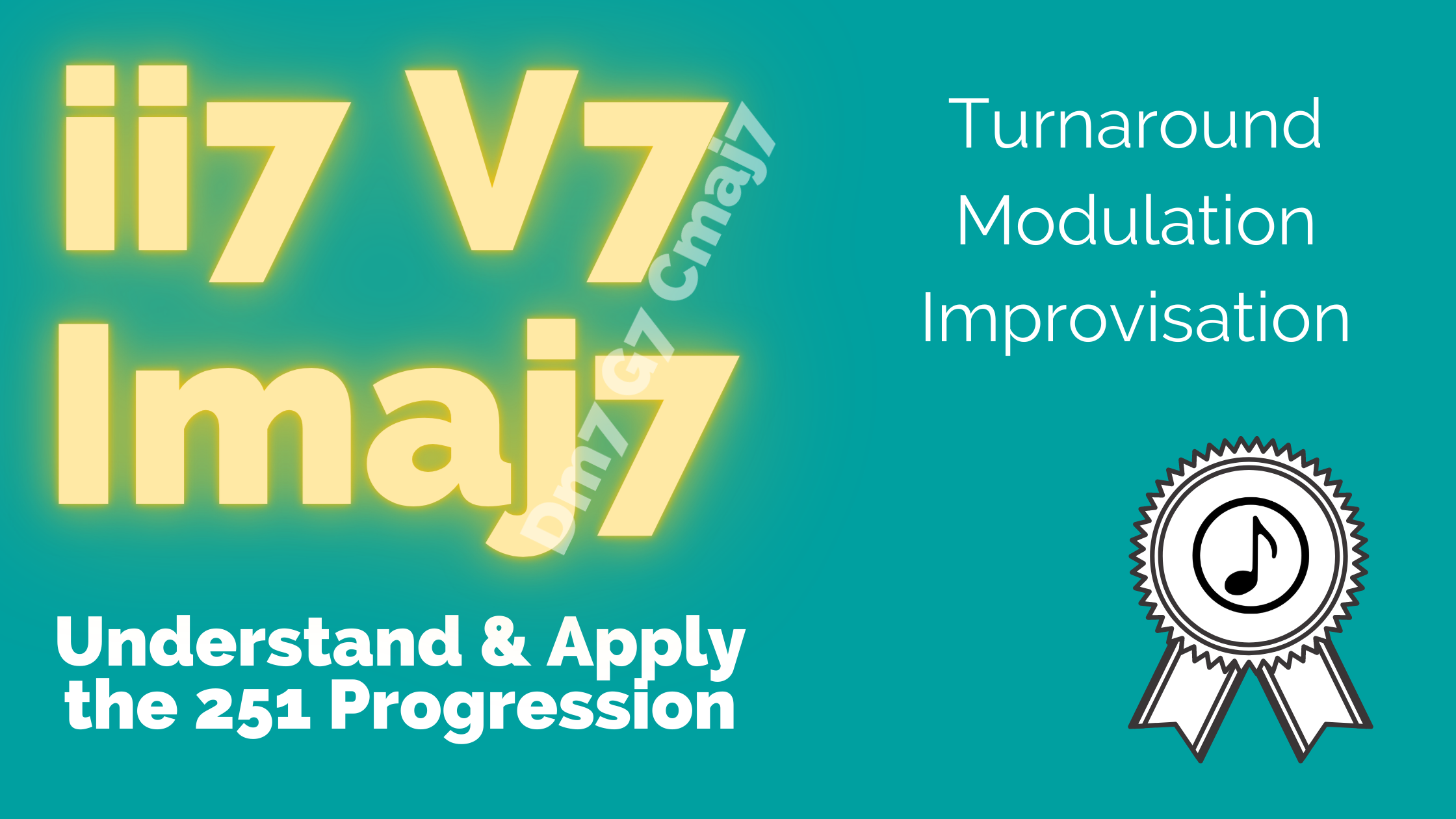
The 251 turnaround is one of the most common chord progression in jazz and pop music. Understanding and mastering this turnaround is crucial for songwriting and improvising as alike.
Before we dive into the main part of applying this progression to the real world, we should understand the music theory behind it. And to kick this off, let's listen to the 251 turnaround to get a feel for it.
Listen
First you should listen to this turnaround. You will probably recognize it from many songs:
I compiled a playlist with a few pop songs featuring 251 progressions:
Understand
This progression is built from a minor 7th chord on the second scale degree ( ii7), followed by a dominant chord on the fifth scale degree ( V7) and concluding with a major 7th chord the first scale degree ( Imaj7).
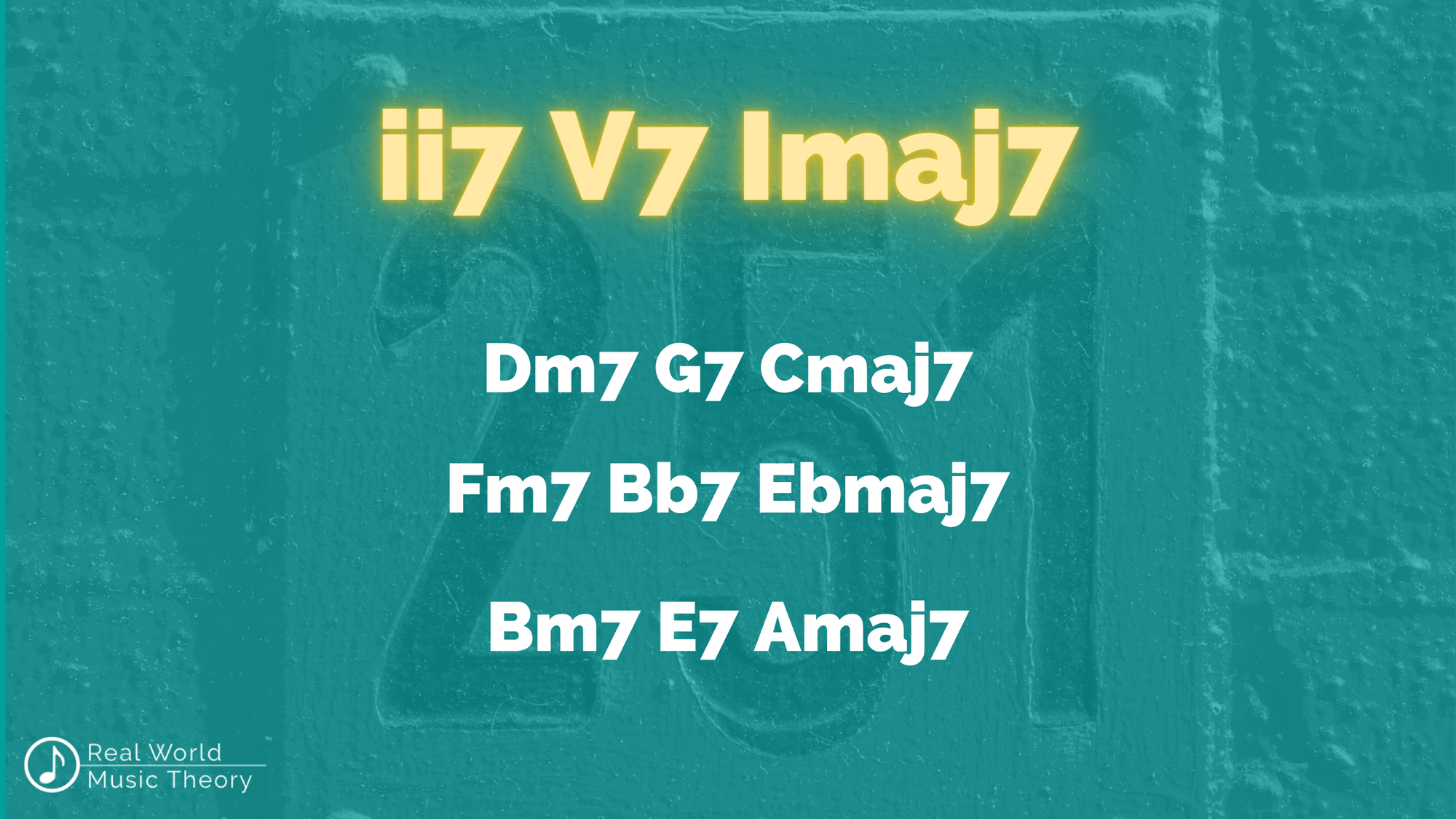
Most people argue that the 251 progression is a variation of the full authentic cadence 451 (subdominant, dominant, tonic). And indeed you only have to switch the IV (4) chord for a ii (2) chord to get the 251 progression. Both progressions end with an authentic 51 ( V-I) cadence. The ii chord is the relative minor chord of IV and fulfills the same function as the IV chord (a pre-dominant function). From the perspective of functional harmony both the 451 and 251 progression have the same functions: pre-dominant to dominant to tonic.
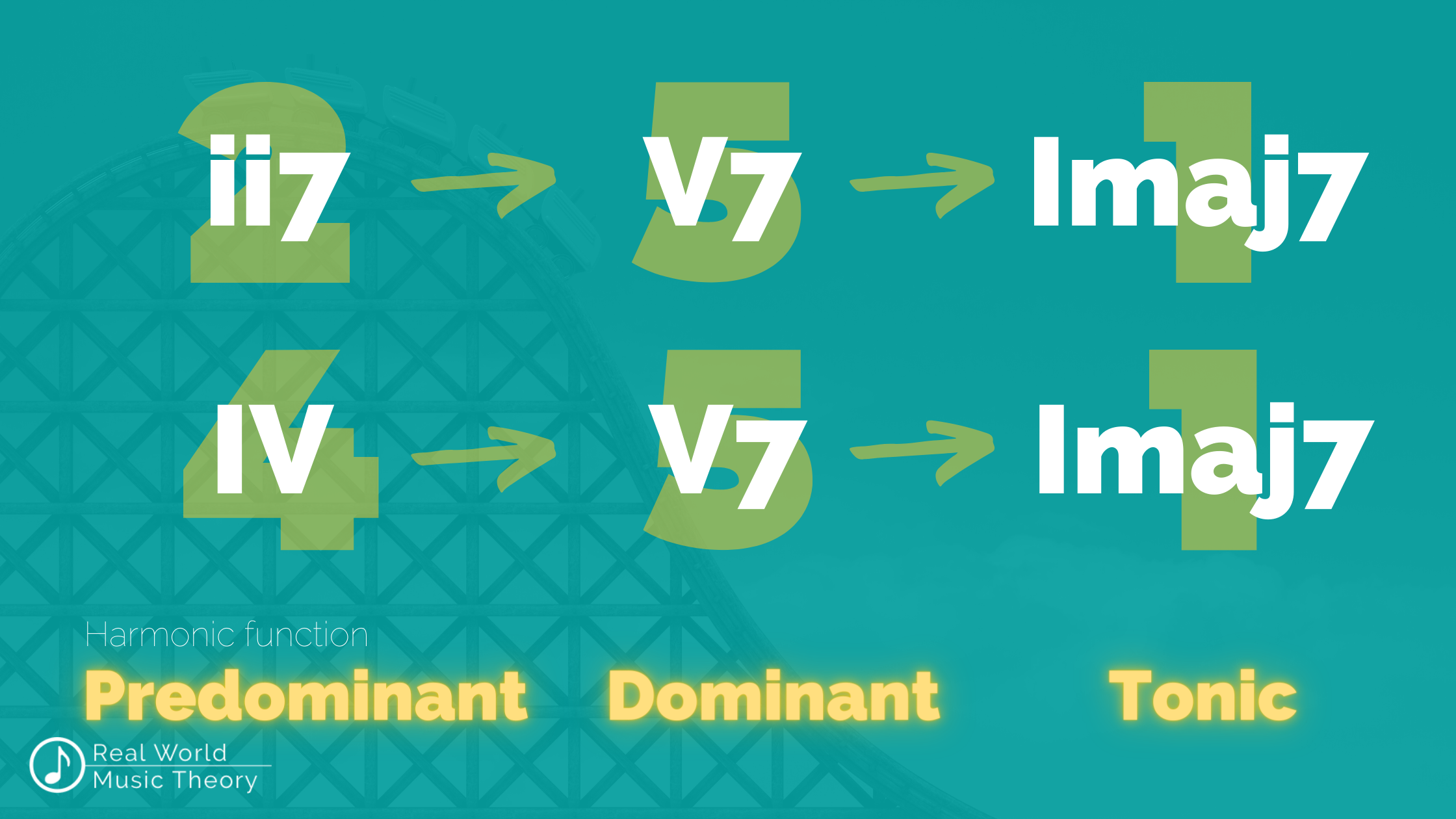
That underpins the argument of 251 being derived from the classic 451 cadence. But some musicologists argue, that 251 is actually the ancestor from which the classic cadence 451 was derived! And if you look at the root motion of the 251 turnaround, that certainly makes sense.
The root notes of the 251 progression strictly move in falling fifth. And falling fifth are one of the strongest and most basic forces in music theory. After all it is no accident, that the circle of fifth is so fundamental to understanding music.
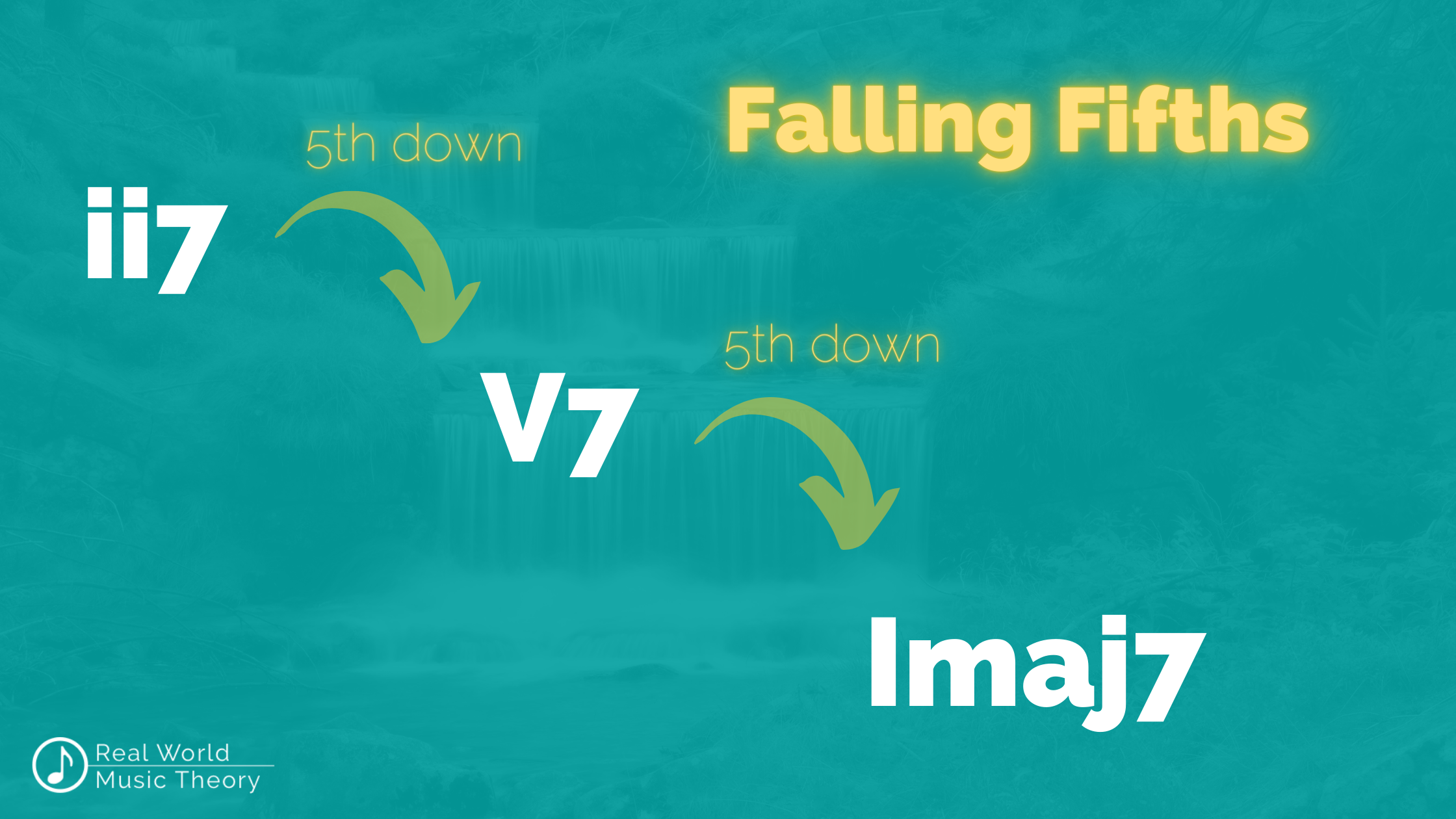
In that sense, the 251 progression could actually be the ancestor of the 451 cadence. I find this very interesting and enlightening, though from a practical point of view you only need to know that both progressions are closely related.
Apply
The uses of the 251 turnaround are everywhere! I can only cover a few of the most common use cases. Feel free to find more in the music you listen to.
Increase tension
Tension is one of our most important ingredients in music. A good song or solo is like a rollercoaster ride: it has highs and lows, increases tension and resolves tension. The 251 turnaround is a mini rollercoaster in itself. It starts with moderate tension ( ii7), builds more tension ( V7) and finally resolves all that tension ( Imaj7).
You can use it anywhere you would like to introduce some tension for a little thrill. Connect any two chords by inserting a 251 turnaround between them. For example if you have a C chord moving to an F chord - especially if the chords are moving slowly - consider inserting a 251 progression:
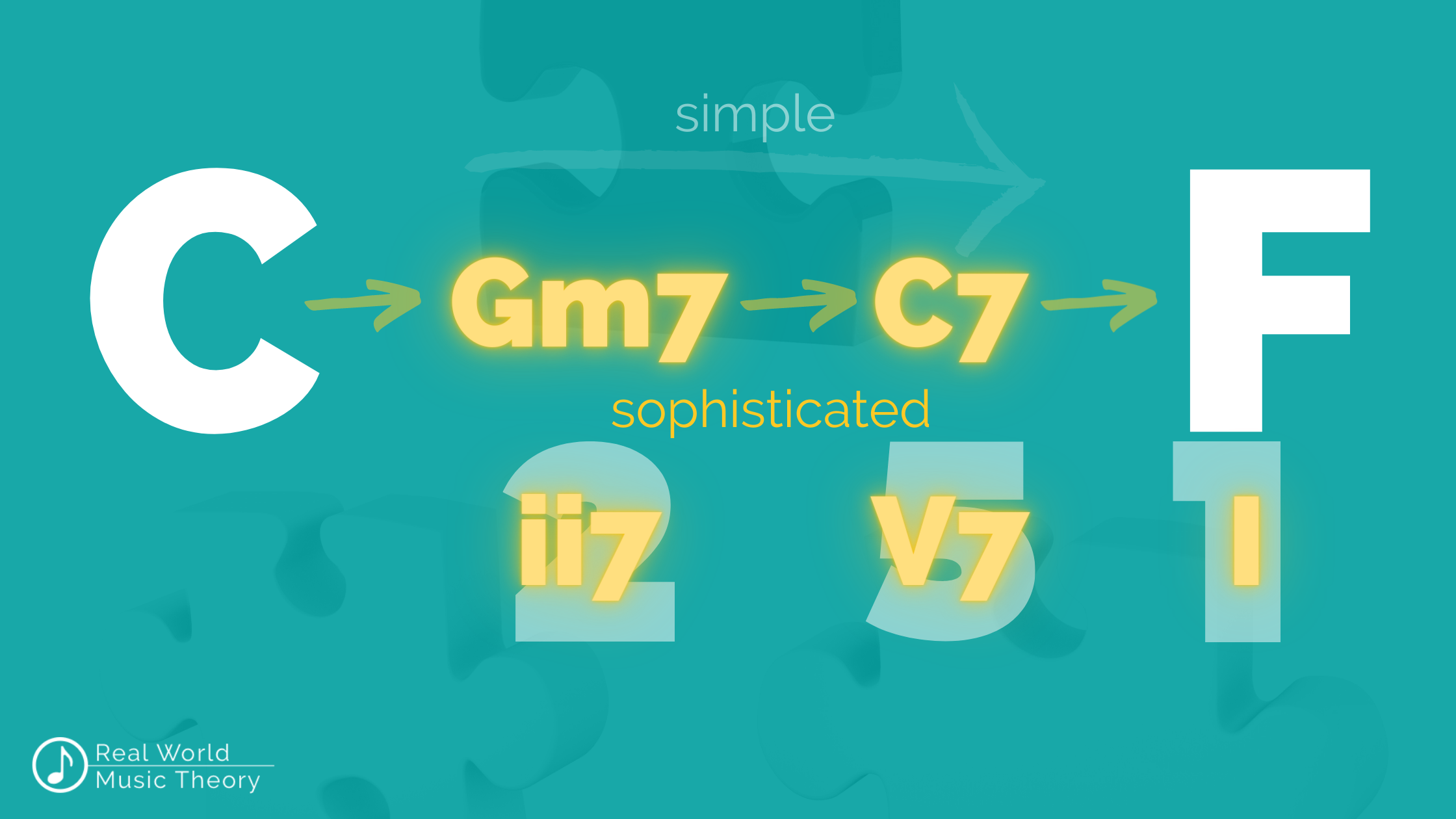
You see that you start backwards with this approach: take the chord you want to land on (F in our example) and make it the I chord of your ii-V-I. Then find the ii7 and V7 chords matching this I chord ( Gm7 and C7 in our example). And just like that, you added some spice and created a much more sophisticated chord progression.
Let's move on to four more practical applications:
- Connect song sections
- Make simple harmony more interesting
- Increase harmonic rhythm
- Modulate to a different key
Here they are: